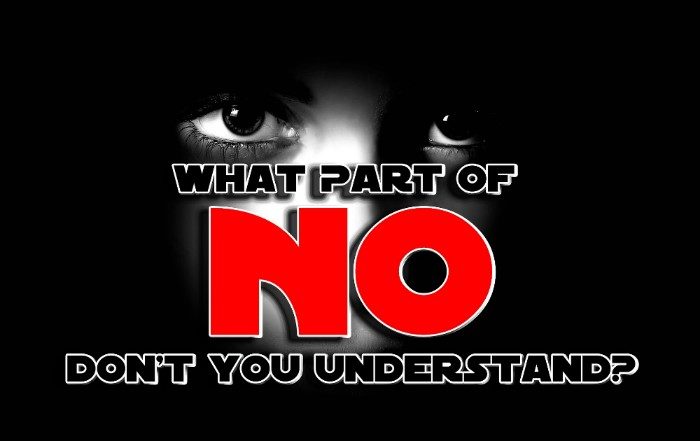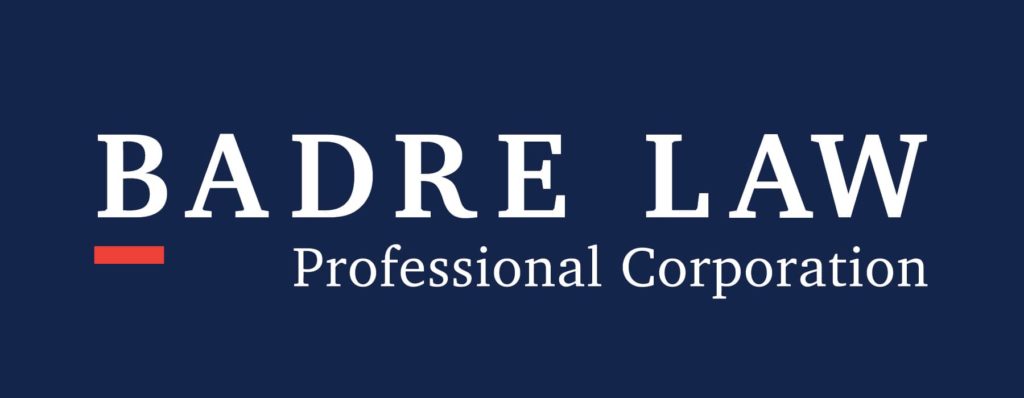Workplace discrimination is a serious issue that can significantly impact employees and organizations. Discrimination can take many forms, including age, race, religion, gender, sexual orientation, and disability.
Employees who experience unlawful discrimination might feel isolated, stressed, and anxious. That, in turn, might negatively impact performance and lead to reduced productivity and increased absenteeism.
It’s essential for employees to understand their rights regarding workplace discrimination and to know what steps they can take to address it. By learning more about discrimination in the workplace in Canada, you will better understand the legal protections available to you as an employee and your employer’s responsibilities to prevent and address discrimination.
It’s also practical to know the different types of discrimination and how they can impact an individual or a disadvantaged group differently and gain insights into filing a discrimination complaint with the appropriate human rights commission or tribunal.
By educating yourself about the things that constitute discrimination, you’ll be able to protect your rights as an employee and help create a more inclusive and equitable workplace for all. So let’s jump right into the topic and gain a deeper understanding of this critical issue, and feel empowered to take action if you or someone you know experiences discrimination in the workplace.
Types of Discrimination
Discrimination can take many forms, and employees in Ottawa may be subject to different types of discrimination in the workplace. Some of the most common types of discrimination are:
Age Discrimination

Age discrimination occurs when an employee suffers mistreatment due to their age. It can include a lack of promotions, given undesirable tasks or shifts, or terminated employment. Examples include:
- Not wanting to hire an applicant because they are too old or too young.
- Denying training opportunities to older employees.
- Making negative comments or jokes about an employee’s age.
Race Discrimination
Race or racial discrimination involves mistreating someone because of race, ethnicity, or nationality. That can include making derogatory comments, having negative attitudes, denying employment or promotions, and subjecting someone to different working conditions than others. Examples include:
- Refusing to hire someone because of their skin colour, ethnic background, or belongingness to one group.
- Paying someone less because of their race.
- Subjecting someone to racial slurs or harassment.
Religion Discrimination
Religious discrimination involves mistreating someone due to their religious beliefs or practices. That can include denying time off for religious holidays, prohibiting specific dresses or hairstyles, or excluding someone from training or promotions. Examples include:
- Refusing to hire someone because of their religious attire.
- Forcing an employee to work on a religious holiday.
- Making derogatory comments about an employee’s religion.
Gender Discrimination
Gender discrimination involves mistreating someone due to their gender identity or sex. That can include paying women less than men, refusing to promote a qualified employee because of their gender, or subjecting someone to unwanted sexual advances or comments. Examples include:
- Refusing to hire a female employee for a traditionally male job.
- Paying women less than men for the same work.
- Subjecting someone to sexual harassment.

- Preferential treatment towards males and lack of equal treatment.
Sexual Orientation Discrimination
Sexual orientation discrimination involves mistreating someone due to their sexual orientation. That can include denying employment, promotion, or other opportunities because of someone’s sexual orientation or subjecting someone to harassment or derogatory comments. Examples include:
- Refusing to hire someone because of their sexual orientation.
- Making derogatory comments about someone’s sexual orientation.
- Subjecting someone to homophobic or transphobic slurs.
- Inappropriate questions concerning gender and sexuality, and even physical characteristics.
Disability Discrimination
Disability discrimination involves mistreating someone due to their physical or mental disability. That can include denying employment, promotion, or other opportunities or subjecting someone to different working conditions than others. Examples include:
- Refusing to hire someone because of their disability or perceived disability.
- Failing to provide necessary accommodations for an employee’s disability.
- Subjecting someone to derogatory comments or harassment because of their disability.
Other Types of Workplace Discrimination
National Origin Discrimination
It occurs when an employer mistreats an employee based on their birthplace, ancestry, culture, or linguistic characteristics associated with a particular ethnic group. No one should be treated differently or put at a relative disadvantage because of their background or belongingness to a certain group.
Genetic Information Discrimination
It happens when an employer treats an employee unfavourably based on their genetic information, including genetic tests or family medical history. Discrimination based on someone’s genetic makeup is unacceptable and can have serious consequences.
Pregnancy Discrimination

Pregnancy Discrimination is another form of discrimination that can occur in the workplace. It happens when an employer mistreats an employee and certain rights because of pregnancy, childbirth, or a medical condition related to pregnancy or childbirth.
No one should face discrimination and deny their rights because they’re starting a family.
Religious Discrimination
Religious Discrimination is yet another type of discrimination that can occur in the workplace. It occurs when an employer mistreats an employee because of their religious beliefs, practices, or observances. Everyone should be able to practice their religion without fear of discrimination.
Marital Status Discrimination
Marital Status Discrimination is when an employer treats an employee unfavourably because of their marital status, whether single, married, divorced, separated, or widowed. Discrimination based on someone’s personal life choices is simply unacceptable.
Political Affiliation Discrimination
Finally, we have Political Affiliation Discrimination. It happens when an employer mistreats an employee because of their political beliefs or affiliations. It is essential to remember that everyone is entitled to their political beliefs and should not face discrimination.
Discussing the Legal Framework
As a resident of Ottawa, Canada, it’s essential to understand the legal framework surrounding discrimination in the workplace. Canada prohibits all forms of discrimination, and employers must take active steps to ensure that their workplace is inclusive and welcoming for all employees.
Here is an overview of the legal framework surrounding discrimination in the workplace in Ottawa, Canada.
The Human Rights Code of Ontario

The Human Rights Code of Ontario is the primary legislation governing workplace discrimination in Ottawa and the rest of the province. The code outlines the protected grounds under which discrimination is prohibited, including race, gender, age, sexual orientation, and disability.
Under the code, it is illegal for employers to discriminate against employees or potential employees on these grounds.
The code also outlines the responsibilities of employers in preventing and addressing discrimination in the workplace. Employers are required to take proactive measures to create a workplace that is inclusive and free from discrimination and accordingly respond if discrimination occurs.
The Ontario Human Rights Tribunal
The Ontario Human Rights Tribunal enforces the Human Rights Code of Ontario. If an employee or potential employee believes they are victims of discrimination in the workplace, they can file a complaint with the tribunal.
The tribunal will investigate the complaint and determine whether discrimination has occurred. The tribunal can order remedies such as compensation or reinstatement if discrimination occurs and is proven.
Employment Standards Act
The Employment Standards Act is another critical piece of legislation that governs the workplace in Ottawa and the rest of Ontario. The act outlines the minimum standards employers must meet regarding working conditions, wages, and work hours.
The act also prohibits employers from retaliating against employees who assert their rights under the act.
Employment Equity Act
The Employment Equity Act is a federal law that requires employers to take proactive steps to ensure that their workforce is representative of the diversity of the Canadian population.

Employers with more than 100 employees must develop and implement an employment equity plan outlining how they will achieve equity in the workplace.
Employer Responsibilities
As an employer, it is your responsibility to prevent and manage discrimination in the workplace. Discrimination can occur on various grounds, including race, gender, age, disability, religion, and sexual orientation. Failure to address and prevent discrimination can lead to low morale, high turnover, and legal repercussions.
Create and Enforce Anti-Discrimination Policies
One of the primary ways to prevent discrimination in the workplace is to establish and enforce anti-discrimination policies. Employers should communicate their zero-tolerance policy towards discrimination to their employees, outlining what constitutes discrimination, the disciplinary measures for offenders, and the reporting procedures for victims.
The policy should also be included in the employee handbook and posted on the company’s notice boards.
Train Employees on Anti-Discrimination
Employers should provide regular training sessions to their employees to educate them about the various forms of discrimination and their legal implications. The training should be mandatory and inclusive of all employees, including management, supervisors, and contractors.
The training should also include case studies and practical scenarios to reinforce the message and equip employees with the necessary skills to address and prevent discrimination.
Provide a Safe Reporting System
Employers should create a safe reporting system that allows employees to report discrimination incidents without fear of retaliation. The system should be accessible, confidential, and easy to use.

Employers should provide a transparent process for reporting discrimination, which includes designated personnel to handle complaints, timelines for resolution, and feedback mechanisms for complainants. Employers should also protect the complainant’s identity and ensure they are not victimized or retaliated against because of complaints.
Investigate and Address Discrimination Complaints
Employers should investigate all discrimination complaints promptly and thoroughly. The investigation must be fair and impartial, and all parties involved should be allowed a fair hearing. Employers should also ensure that the complainant gets protection from retaliation during and after the investigation.
If the investigation confirms discrimination, the employer should take appropriate corrective measures, including discipline, training, or termination of the offender.
Ensure Equity in Hiring and Promotions
Employers should ensure that their hiring and promotion practices are fair and equitable. The hiring process should be according to merit, and all candidates must have equal opportunities, regardless of race, gender, age, or other personal characteristics.
Employers should also conduct periodic reviews of their promotion practices to ensure they are not discriminatory.
Comply with Human Rights Legislation
Employers should comply with the Canadian Human Rights Act and the Ontario Human Rights Code, which prohibit discrimination in the workplace. These laws protect employees from discrimination due to race, gender, age, religion, and disability. Employers who violate these laws can face legal action and financial penalties.
Statistics on Discrimination in the Workplace in Ottawa
The 2016 Census shows visible minorities represent 29.9% of Ottawa’s population. In 2019, the Ontario Human Rights Commission received 1,168 complaints related to discrimination based on race, making it the most common ground for discrimination complaints.

Discrimination based on disability and age were the second and third most common grounds for discrimination complaints.
A 32-page report entitledDiscrimination in the Workplace in Canada: An Intersectional Approach became public in 2016. In that report, the marginalized identities include women, racialized individuals, and older workers.
Indigenous people, those with disabilities, homosexuals, refugees, and those in the low- and middle-income (LML) class. Data shows that those identifying with multiple marginalized groups are more likely to experience discrimination.
For example, women who are also Indigenous or have a disability have higher reported rates of discrimination than women who do not identify with those groups. Similarly, racialized individuals who are also older or refugees are more likely to report experiencing discrimination.
Data also shows that the intersection of three marginalized identities, such as female, racialized, and older workers, increases the likelihood of experiencing discrimination in the workplace.
Overall, employers have a legal and moral responsibility to prevent and manage discrimination in the workplace. Employers can create a safe and inclusive workplace that benefits their employees and business by taking proactive measures to prevent and manage discrimination.
Filing A Discrimination Case In Court
Experiencing discrimination in the workplace can be a traumatic experience, and no employee should have to endure such treatment, and it is vital to take action when it happens.
In Ottawa, Canada, you can take steps to file a complaint and seek justice. This article will outline those steps in detail, including how to identify discrimination, where to file a complaint, and what to expect during the process.

Identifying Discrimination
Discrimination can take many forms in the workplace, including but not limited to indirect discrimination like harassment, bullying, or unfair treatment based on race, gender, sexual orientation, disability, religion, age, or any other protected ground.
It can also manifest as direct discrimination, unequal pay or opportunities, wrongful termination, or retaliation for whistleblowing.
It is essential to document any incidents of discrimination, including dates, times, witnesses, and any evidence, such as emails or text messages. It will help you build a stronger case when filing a complaint.
Filing a Complaint
The Human Rights Tribunal of Ontario (HRTO) investigates workplace discrimination complaints in Ottawa. To file a complaint, you must complete an application form and submit it to the HRTO. The form can be completed online or in person at the HRTO office in Ottawa.
The HRTO provides guidance and support throughout the complaint process, including free legal representation for eligible complainants. The complaint process is confidential, and your employer protects you from retaliation.
What to Expect During the Process
Once filed, the HRTO will notify your employer and investigate the complaint. The investigation may involve interviews with witnesses, a review of documents, and a hearing. The HRTO may also offer mediation to resolve the complaint before a hearing.
Depending on the case’s complexity, the complaint process can take several months to a year. It is essential to stay informed and involved throughout the process and to provide any additional information or evidence requested by the HRTO.

Possible Outcomes
If the HRTO finds that discrimination occurred, it can order your employer to take specific actions, such as paying compensation or implementing policies to prevent future discrimination. If the case goes to a hearing, the HRTO can also order your employer to pay your legal fees.
If the HRTO dismisses your complaint, you can appeal the decision to the Divisional Court of Ontario. However, it is essential to note that appeals are complex and expensive.
Overall, filing a complaint of discrimination in the workplace can be a challenging process. Still, it is an essential step toward seeking justice and ensuring that no one else has to endure such treatment.
In Ottawa, the HRTO is available to provide guidance and support throughout the process. Remember to document any incidents of discrimination, stay informed and involved, and seek legal representation if needed. Together, we can work towards creating a safe and inclusive workplace for all.
Hiring a Lawyer
Hiring a lawyer is an important step, and they can provide invaluable guidance on handling potential legal issues related to bias and unfair treatment of employees. They can also help employers create and implement policies that protect workers from discriminatory practices, ensuring compliance with state and federal laws.
By having such a professional on board, businesses protect their interests while creating a safe work environment where everyone is treated fairly according to the law. Ultimately, hiring a workplace lawyer benefits employers and employees by ensuring that all parties involved have access to justice should they face any form of prejudice or injustice at work.
Key Strategies to Prevent Workplace Discrimination in OttawaFinal Thoughts

Discrimination in the workplace is still a significant issue in Ottawa, Canada. Unfortunately, despite the efforts made by the government and human rights organizations to eradicate discrimination, many employees still face unfair treatment in their workplace.
Employers must create a safe and inclusive work environment and treat everyone equally. Employers can achieve it by promoting diversity and training employees to raise awareness about different types of discrimination. Additionally, it is essential for employees who have experienced discrimination to speak out and seek legal support to address their issues.
Overall, it is the responsibility of everyone in the workplace to work towards eliminating discrimination and promoting equality. By working together, we can create a more inclusive and welcoming work environment for all employees in Ottawa, Canada.

